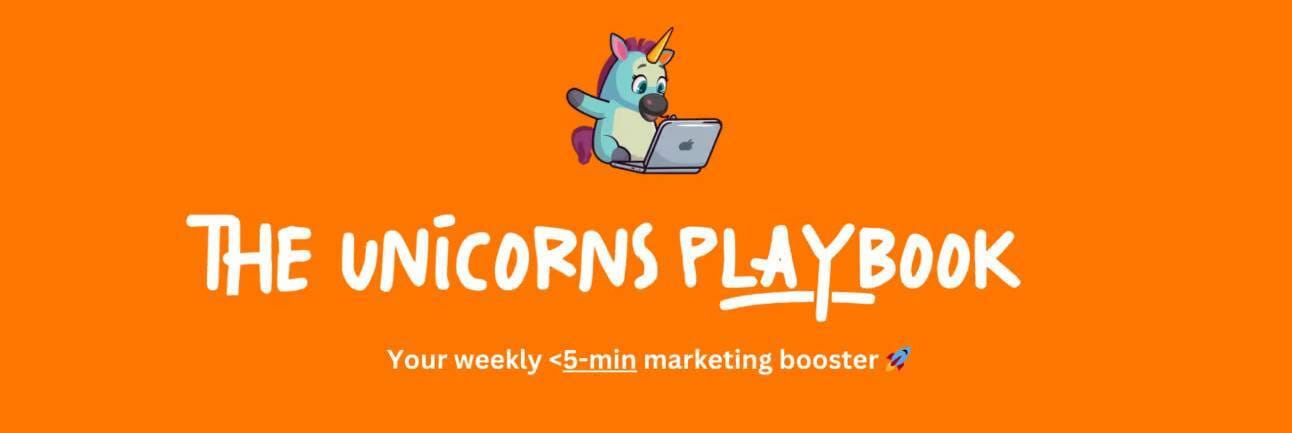- The Unicorns Playbook
- Posts
- Stop Charging Users 🦄
Stop Charging Users 🦄
How Loom turned free users into a growth engine

Smart Marketing in 5 minutes!
Hey unicorns! 👋
Today's newsletter packs a double punch:
First, we're diving into how companies like Loom and Miro turn free users into growth machines.
And then, we reveal the answer to this week's ME-dar Effect quiz - and why most growth teams miss this powerful psychological trigger.
Let's get into it...
Sponsored By: The Rundown AI
Start learning AI in 2025
Everyone talks about AI, but no one has the time to learn it. So, we found the easiest way to learn AI in as little time as possible: The Rundown AI.
It's a free AI newsletter that keeps you up-to-date on the latest AI news, and teaches you how to apply it in just 5 minutes a day.
Plus, complete the quiz after signing up and they’ll recommend the best AI tools, guides, and courses – tailored to your needs.
Weekly Growth Strategy
🦄 The Hidden Power of Freemium: How to Turn Free Users Into Revenue Machines

Looking to build sustainable growth without burning cash on ads?
What if I told you there's a proven way - one that turns free users into revenue machines?
Enter the freemium model.
To understand how it works, think of Spotify's free music streaming or Slack's free team chat.
The basic product is free forever, but users pay to unlock advanced features or remove limits.
And they're not doing this out of generosity - by offering free software, users become part of their sophisticated growth engine.
You see, freemium isn't just about offering a free version.
It's a growth strategy where free users naturally spread your product through their networks, creating a steady stream of organic upgrades.
Here's how it works:
When someone uses a free product and finds real value, they naturally share it with their team.
Think of a designer using Figma's free version - they'll bring in other designers, then their product team, and soon the whole company will join.
That's when smart limits kick in.
Not by restricting core features but by adding team collaboration caps or storage limits that make upgrading feel natural.
Three Principles That Drive Freemium Success:
First, let users experience value by giving them access to your core features.
Limit things like storage or team size, not the features and mechanisms that make your product unique.
Second, create natural upgrade moments.
Don't force users to pay - let them hit organic growth limits as their usage expands. It's better to give them more free space than less.
Third, focus on the right metrics, like activation over signups.
A core group of engaged free users who actively share your product will drive more sustainable growth than a massive list of signups who barely use it.
Quick Case Study:
When Loom launched their video messaging tool, they chose a freemium, bottom-up approach instead of targeting enterprise deals like Zoom.
They let anyone record and share videos freely (aka giving users access to their core features), only adding limits on the number and length of videos they could create (aka letting users experience what makes their product special while limiting usage volume).
The result?
Massive bottom-up growth as users naturally spread the product through their organizations.
Want the complete freemium growth playbook?
Click the button below to read the step-by-step blueprint on how to identify your product's core features vs. natural limits, design viral loops in your free tier, introduce the right upgrade triggers, plus see real examples of companies who nailed each step.
Brain Teaser Answer
📝 Answer to Last Week’s Quiz
🎯 The Correct Answer:
Create "learning personality" profiles that shape how progress is communicated
Here's Why:
The learning personality profile approach goes beyond simple personalization by creating a framework for meaningful identity connection. Instead of just telling students "YOU completed 60%," it frames their progress within their unique learning identity. A "Practical Problem-Solver" might see their progress as real-world applications unlocked, while a "Conceptual Thinker" sees concepts mastered.
Why Other Approaches Fall Short:
Simply adding personal pronouns or milestone celebrations feels mechanical and misses the deeper opportunity. The ME-dar Effect works best when it reflects how people see themselves, not just when it speaks to them directly. Surface-level personalization (like changing "the" to "your") might grab attention momentarily, but it doesn't create the lasting engagement that comes from true identity alignment.
The Key Insight:
The most powerful personalization doesn't just add your name – it understands and reflects your identity. StreamLearn's success comes from creating a system that adapts to each student's self-perception as a learner, making every interaction feel authentically personal.
🔑 Real-World Takeaway:
Look for opportunities to create frameworks that help users see themselves in your product's story. The goal isn't to just speak to users personally, but to reflect and reinforce how they want to see themselves.
Stay tuned for next Thursday's brain teaser! 🧠
Tell us, how did this email land for you? |

